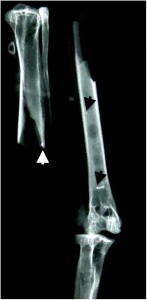By Tim Hopkins
Raptor persecution is an emotive issue in Britain. In an attempt to increase the population of gamebirds, some unscrupulous gamekeepers (sometimes directed by managers and employers) continue to illegally kill raptors. For conservationists and welfare groups, the shooting, trapping and poisoning of these wild birds represents the worst of the gamebird industry. Aside from the welfare concerns (for both game and raptor) and the disease risks from the release of many millions of captive birds annually, persecution continues to have a significant conservation impact on a number of species, in particular the hen harrier (Circus cyaneus) and golden eagle (Aquila chrysaetos). Historically, some British species were pushed to extinction due to such pressure, although all have since returned to breeding. Parts of the gamebird industry continue to dispute the scale and impact of raptor persecution and believe that the conservationists and welfare bodies are attempting to piecemeal outlaw their traditional hunting sport. For any given incident, the reliability and transparency of a postmortem investigation is paramount.
Veterinary pathologists, police and NGOs are hindered in confirming shooting by decomposition, scavenging and concealment of the carcase by the perpetrator. Furthermore, the identification of ballistic objects within a carcase is rarely enough to prove cause of death – it is often an incidental finding. An article published recently in Veterinary Record Case Reports details a confirmed shooting in an otherwise ambiguous postmortem examination of a hen harrier using advanced imaging techniques.
The bird was fitted with a tracking device as part of Natural England’s Hen Harrier Recovery Project, which enabled its recovery after death. Despite the advanced state of decomposition, a postmortem examination was performed at the Zoological Society of London’s Institute of Zoology. The bird had a broken tibiotarsus, which was radiographed, and minute metallic radio-opacities noted. Without an obvious gross ballistic remnant, the authors needed a diagnostic tool that would determine the composition of the foreign object and its effect on the surrounding tissue. Several modalities were considered but ultimately rejected as they failed to preserve both the foreign body and the microscopic structure of the bone. Histology, for instance, would have provided accurate descriptions of the bony trauma but no information about the chemistry of the object. Conversely, many spectroscopic techniques would have provided accurate descriptions of the metallic object atomic makeup but destroyed the surrounding bone in the process. Scanning Electron Microscopy with x-ray Dispersive Spectroscopy (SEM-EDX) was the only tool that fitted the bill.

SEM-EDX was carried out at the University College London’s Institute of Orthopaedic and Musculoskeletal Science. With great care, the bone was prepared for imaging, which included a thin coat of gold palladium to reduce scatter during scanning. The images were spectacular and conclusive. The fragment had tunnelled into the cortex of the tibiotarsus, fracturing the bone and trabeculae. On its way, it had disintegrated. The fragment was predominantly lead on EDX. The lack of any significant bone resorption or remodelling suggested this injury had resulted in rapid death. Case closed.
That was until we noticed that there were minute amounts of niobium on the spectrum. Niobium is not used in ammunition or firearms manufacture, so where had it come from? The explanation took several months. EDX, like any diagnostic tool, is subject to artefacts, operator error and sensitivity and specificity constraints. After consulting with the University of Bristol’s Department of Earth Sciences, the authors ran the scan data through third party software – DTSA II (Desktop Spectrum Analyser, National Institute for Standards and Technology). DTSA was able to discriminate the spectral peaks and showed that the aforementioned niobium was a misread of the peaks caused by the gold palladium coating. Additionally, it revealed the presence of arsenic and antimony, common additives in lead ammunition manufacture.
This case demonstrates the application of a novel forensic modality to the veterinary field. SEM-EDX has also been used in human forensic science to demonstrate gun shot residue (GSR) – microscopic remnants of the ammunition primer and propellant – on victims, shooters and firearms. This information often forms a vital piece of the investigative puzzle. In the future, it may be possible to determine that an animal was shot by a particular firearm or person by matching the GSR EDX data.
Novel modalities are increasingly important for NGOs and police seeking to stamp out illegal persecution. Confirmation of shooting in such ambiguous cases may increase pressure on the game industry to reform its practices. The imminent use of GSR EDX to match individuals with shooting incidents may be enough to dissuade gamekeepers too.
More details about this case can be found here